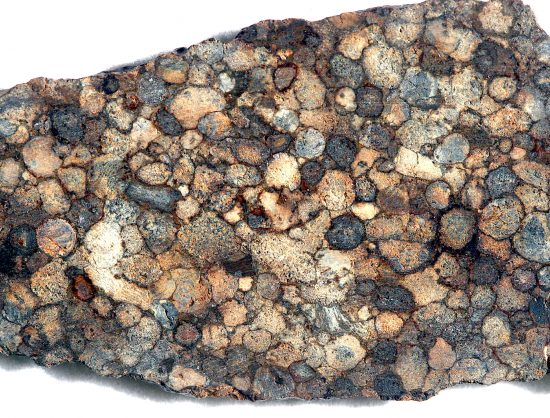
May 19, 2020
Mineral compounds form in electric fires.
“I would rather be ashes than dust! I would rather be a superb meteor, every atom of me in magnificent glow, than a sleepy and permanent planet.”
— Jack London
Meteorites are thought to be “relics” of the Solar System’s earliest epochs, because they contain glassy spheres called, chondrules. Astrophysicists believe that chondrules are a remnant of planet formation; they “collided” with nebular gas and dust, causing the material to condense into proto-planets. The discovery of minerals in meteorites that require high temperatures to form goes against the standard interpretation of the Solar System’s birth.
Iron oxide is found in chondritic meteorites. Since iron oxide forms at temperatures 1000 degrees lower than that required to create minerals like anorthite, forsterite, and olivine, how did it find its way into chondrules? As mentioned, planetary scientists speculate that the chondrules are the result of planetesimal collisions.
As the Nebular Hypothesis states, once a rarified nebula collapses into particles due to gravitational attraction, they collect into larger bodies, eventually forming masses just short of planet size. It is the collisions of those objects that is said to provide the heat needed to melt minerals that then condense into hardened droplets.
The dichotomies of high and low temperatures needed to create various minerals, and hardened minerals embedded in softer substrates, can be addressed by considering the Electric Universe theory.
The Stardust spacecraft’s aerogel system collected fine bits of rock from comet Wild 2 on January 2, 2004, passing through its coma at a distance of 240 kilometers. It then sent the samples to Earth on January 15, 2006. Minerals that form only at high temperatures were found. Interestingly, olivine was also collected. Scientists at the time wondered how something that was supposed to be a remnant from a nebular cloud could exhibit crystalline structures requiring a blast furnace to create. Anorthite, a compound of calcium, sodium, aluminum and silicate, and diopside, made of calcium, magnesium and silicate were found around Wild 2.
When the first Hayabusa mission to the asteroid 25143 Itokawa finally made it back to Earth, there were more than a thousand fragments inside its collection capsule. The mission team was surprised to find silicates from Itokawa that had been exposed to temperatures in excess of 800 Celsius. Chondritic meteorites are also made of similar stuff. That can only mean that comets, asteroids, and meteoroids share a similar birth.
Physicist and Electric Universe advocate Wal Thornhill argues:
“…planets are ‘born’ at intervals by the electrical ejection of charged material from the similarly charged interiors of larger bodies – gas giants from stars, and rocky planets from gas giants…Electrical ejection in a massive internal lightning flash answers the question of the source of the energy. It is not dispersive like an explosion. The electromagnetic pinch effect will produce a jet of matter…The result is a proto-planet plus a stream of gases and meteoric debris.”
In other words, various compounds can form as the result of electric arcs. The z-pinch effect compresses different plasmas into solid matter.
Stephen Smith
(Lightning seen as cause of puzzling chondrules — Lightning flashes in the huge cloud of primeval dust and gas from which the planets in the solar system condensed may have caused formation of the puzzling objects known as chondrules … the tiny, rounded granules about the size of poppy seeds found in stony meteorites…. Dry lightning flashes could have been the source of the fast heating that, followed by quick cooling, [explains] the glassy structure of chondrules. — Science News, July 16, 1966.)
The Thunderbolts Picture of the Day is generously supported by the Mainwaring Archive Foundation.












